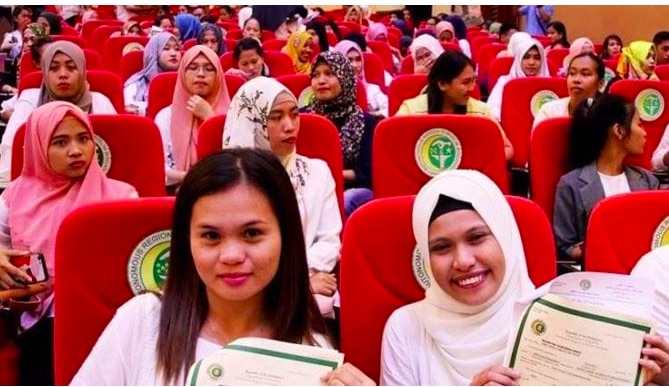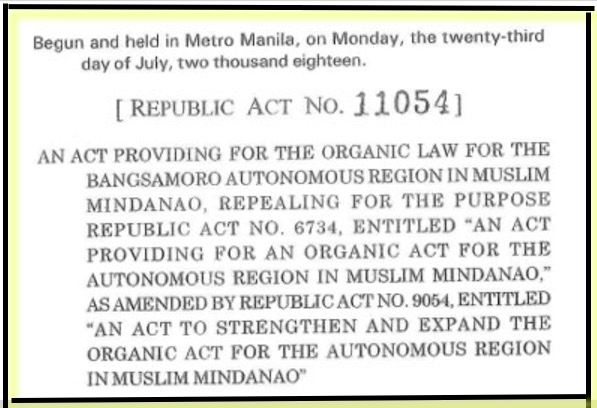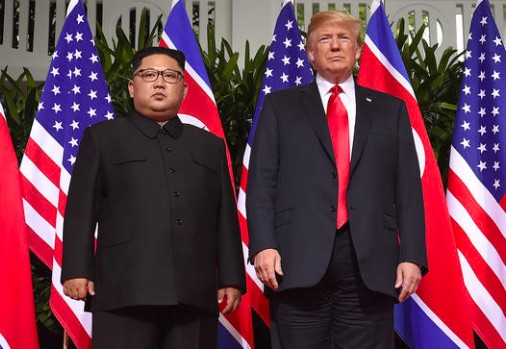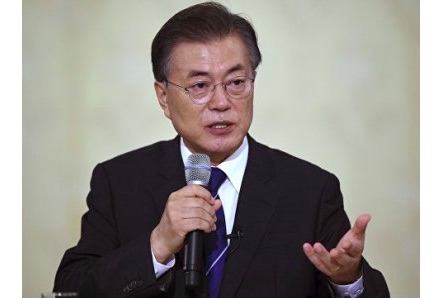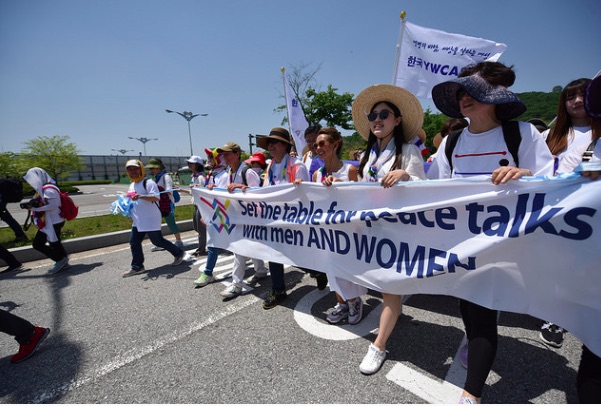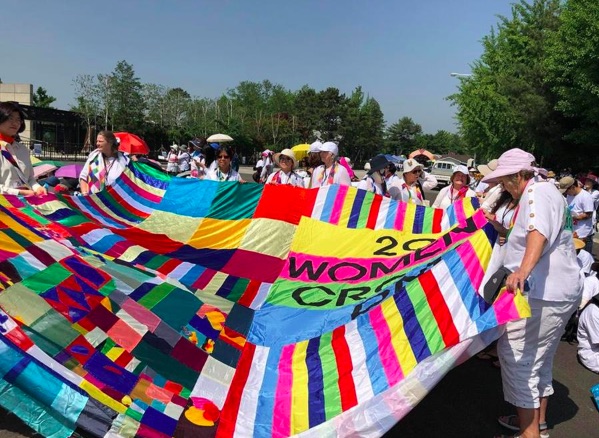. .DISARMAMENT & SECURITY. .
An article from Zamboanga Today
In a historic event, the Philippines’ one-time largest Muslim rebel group presented a landmark law last August 8, 2018 which will give Moro people greater autonomy in ruling their homeland in Mindanao.
Congress’ ratification of Bangsamoro and its eventual signing into law by President Rodrigo Duterte came as a huge victory for the Moro Islamic Libetation Front (MILF), which had been waging a rebellion seeking autonomy or independence in southern areas that they regard as their ancestral homeland.
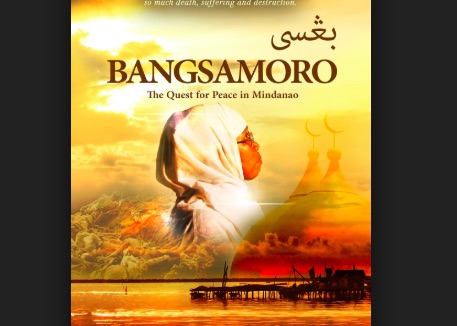
Poster for film Bangsamoro: The Quest for Peace in Mindanao
The presentation developed after President Duterte led the ceremonial signing of the BOL in Malacañang three weeks ago after its signing was delayed due to the abrupt change of leadership in the House of Representatives.
It will be recalled that during his presidential campaign in 2016, Duterte, then mayor of Davao City, said he would work out for the grant of self-governance, in the context of federalism, to Mindanao’s Bangsamoro sectors, if elected president.
“There shall be a Bangsamoro country to finally end the decades-old conflict that is rooted in the Bangsamoro’s fight for self-determination and the recognition of their unique identity,” Duterte said, as he hoped it will help correct the historical injustices committed against the Moros.
The first Philippine President from Mindanao said: “May this (Bangsamoro law) serve as the final trajectory for the attainment of genuine peace, stability, [and] good governance in Muslim Mindanao. Together, let us shatter the dark clouds that once loomed over our nation for generations, welcome the dawn of a brighter future not only for the Bangsamoro people, but for all peace loving Filipinos.”
Senator Juan Miguel “Migz” Zubiri, who chairs the Senate subcommittee on the Bangsamoro Basic Law (BOL), had called the ratified law for Bangsamoro Autonomous Region in Muslim Mindanao (BARMM) an advent of a new era for Mindanao.
“It’s a new dawn for Bangsamoro in Mindanao,” he said following the ratification of both the Senate and the House of Representatives. “The MILF and the MNLF (Moro National Liberation Front) are ready to work with the Philippine Government especially in the conduct of the plebiscite that will be held around November.”
Admitting that the “Bangsamoro was the hardest bill he ever tackled, the Mindanao lawmaker said its preamble was contentious.
“They were about to walk away. We were able to convince MILF to step back from independence bid. We will have a parliamentary system in Bangsamoro region. There will be 80 members of parliament under Bangsamoro region. There will be a chief minister, two deputy chiefs and a ‘wali’ (ceremonial leader).”
Senator Zubiri assured the Bangsamoro people that in the Senate they will exert all efforts to ensure the successful implementation of the BOL.
This includes the budget for the plebiscite and the yearly Block Grant allocation, as well as the national program that will benefit the Bangsamoro Autonomous Region, according to Zubiri.
(continued in right column)
Can peace be achieved in Mindanao?
(continued from left column)
“I will continue to champion our cause in the Senate for the continued peace and prosperity for your region and the whole of Mindanao,” he added.
Without any doubt, according to political observers, President Duterte made true of his promise to the Bangsamoro people and his commitment to the Bangsamoro peace process.
In a statement, Usec. Nabil Tan, deputy presidential peace adviser and chair of the Government Implementing Panel for the GPH-MILF peace accord, said the passage of the BOL is the start of a new chapter in the lives of the Bangsamoro people.
“This is just the beginning… Much work still needs to be done. We must now double our efforts,” said Tan.
Tan noted that both the Senate and House of Representatives made sure the landmark measure was crafted “within the bounds of the Philippine Constitution.”
He said the BOL is a vast improvement over the ARMM Organic Law (RA 9054) and the final peace agreement signed between the Philippine government and the MNLF in 1996.
“This is ARMM plus-plus,” Tan said, explaining that with the passage of the BOL, more resources will now be poured into the region to accelerate its economic development.
These resources, he said, include an annual Block Grant that will be automatically appropriated to the BARMM government to fund its operations for the next 20 years.
Tan said a Special Development Fund will also be provided to fast track the rehabilitation of conflict-affected areas in the region. “We now have this law. The challenge now is how to make the Bangsamoro government work effectively,” he said.
For his part, chair of the Government Implementing Panel for the GPH-MILF peace accord Mohagher Iqbal said the passage of the BOL signifies a milestone that was achieved by the concerted efforts of all stakeholders in the peace process.
He paid tribute to those who made huge sacrifices that led to the approval of the BOL, particularly members of the MILF leadership who have passed away.
He also lauded members of Congress for their firm support to the law, which he said aims to provide the Moro people meaningful autonomy and enable them to chart their political future through the democratic process.
“We urge you to value this agreement. This peace process is for everyone,” Iqbal said.
Autonomous Region in Muslim Mindanao (ARMM) Governor Mujiv Hataman said the passage of the BOL is a truly momentous occasion for the Bangsamoro people.
“We have reached this point through sacrifice,” he stressed.
Hataman lauded the Philippine government and the MILF for ensuring the approval of the law, which is expected to bring a long-lasting peace and sustainable development in the region.
He said the passage of the BOL is not meant to diminish the accomplishments of the ARMM government but seeks to build on its gains over the years.
“We are not erasing the ARMM,” Hataman said.
The ARMM governor said that the greater challenge confronting the Bangsamoro people now is how to ensure the successful implementation of the law.
“The new law is now here. Let us unite behind it. This is a better law,” he said. Hader Glang

